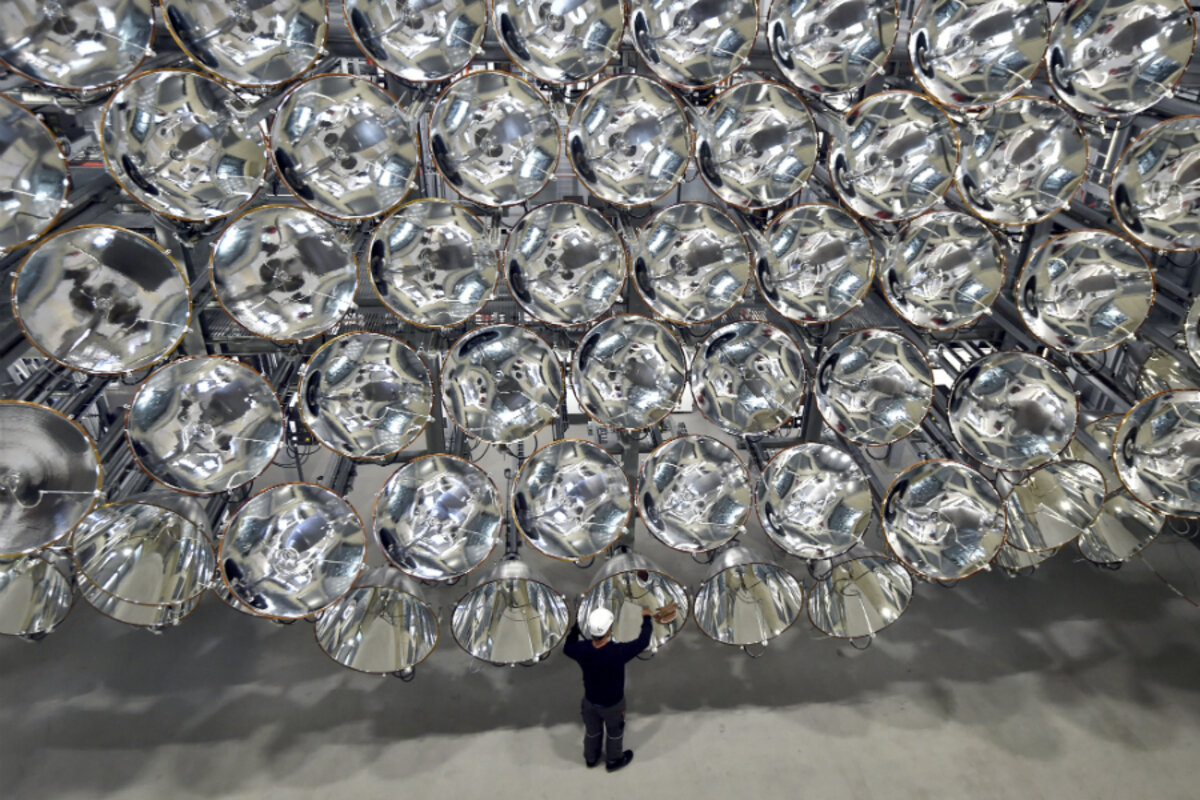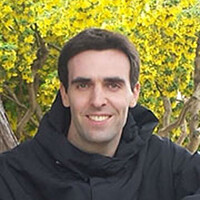Why did the Germans build a super sun?
Loading...
Germany is betting big that hydrogen has a bright future as a green fuel source, but to realize its full potential, they’re relying on something yellow.
Very yellow. The German Aerospace Center has built a , which they say can outshine the sun by a factor of 10,000, at least in terms of the light that typically falls on a small portion of the Earth’s surface. It's the stuff of Superman’s dreams.
To build their super sun, scientists assembled 149 spotlights similar to the xenon lamps often found in cinema projectors. These lanterns beam down their rays, all focused onto an 8-inch by 8-inch square, where temperatures can reach 5,432 F., more than half the temperature at the surface of the sun.
This heat is the key to studying novel ways of producing hydrogen, according to Bernhard Hoffschmidt, the director of DLR's Institute for Solar Research.
In the quest for clean, renewable energy, some turn to the periodic table’s simplest element. Inconveniently, despite being the most abundant element in the universe and serving as the main fuel source for the sun itself, the proton-electron pair is rarely found alone on Earth, where it prefers to put the H in H20.
Proponents of the clean burning fuel are keenly interested in taking water and splitting the H from the O, which is most simply done via a sizeable electric current. But this process consumes a lot of energy, which kind of defeats the purpose of fuel production.
DLR researchers hope to shine a light on a new method. Rather than an electric current, Synlight harnesses the power of the (artificial) sun. After the lamps have superheated a metal to 1,475 degrees F., the process calls for spraying the surface with water vapor. At such high temperatures, the metal binds with the oxygen, , Gizmodo reports.
Then the metal can be reheated to strip the oxygen from the metal, and the system is ready to go again.
But the system is a long way from prime time. Over the course of four hours, the power hungry experiment reportedly gobbles up as much energy as a four-person family would typically consume in a year.
Researchers hope to eventually engineer the experiment to run off its own solar panels, which would make the hydrogen produced a truly green fuel. Dr. Hoffschmidt says the technology has shown promise in small-scale lab demonstrations, and suggests Synlight will pave the way for a future industrial version scaled up by a factor of 10.
And Germany doesn’t have all of its energy eggs in one basket either. Long a leader in renewables, the country’s wind energy production is at times too efficient, once churning out a surplus so great it briefly pushed electricity prices into negative territory.
In addition to its hydrogen making capabilities, Synlight will also be used to test space travel components. The system can focus all its dazzling radiance on one test element, or divide its attention between several smaller experiments.
The report uses material from the Associated Press.





